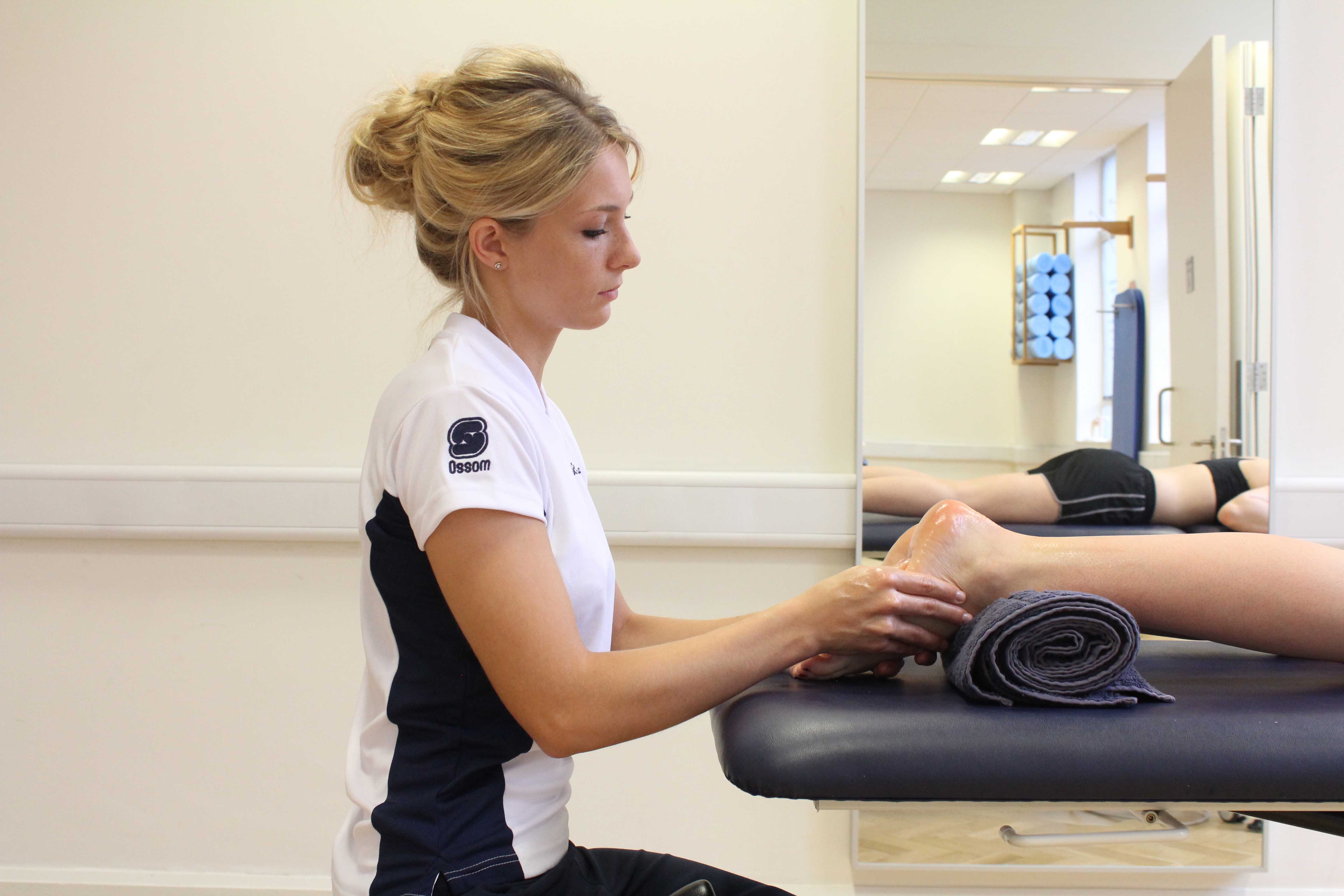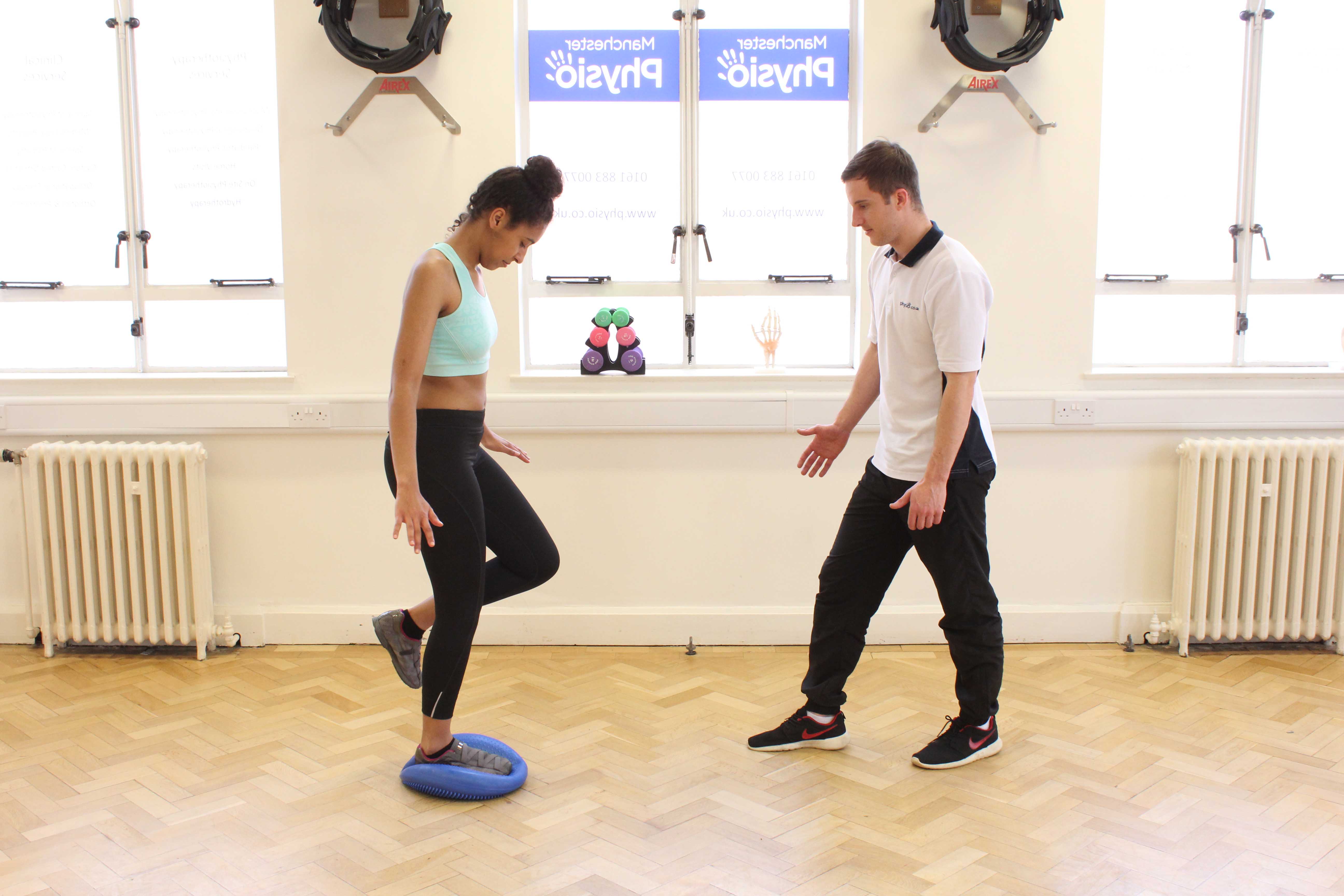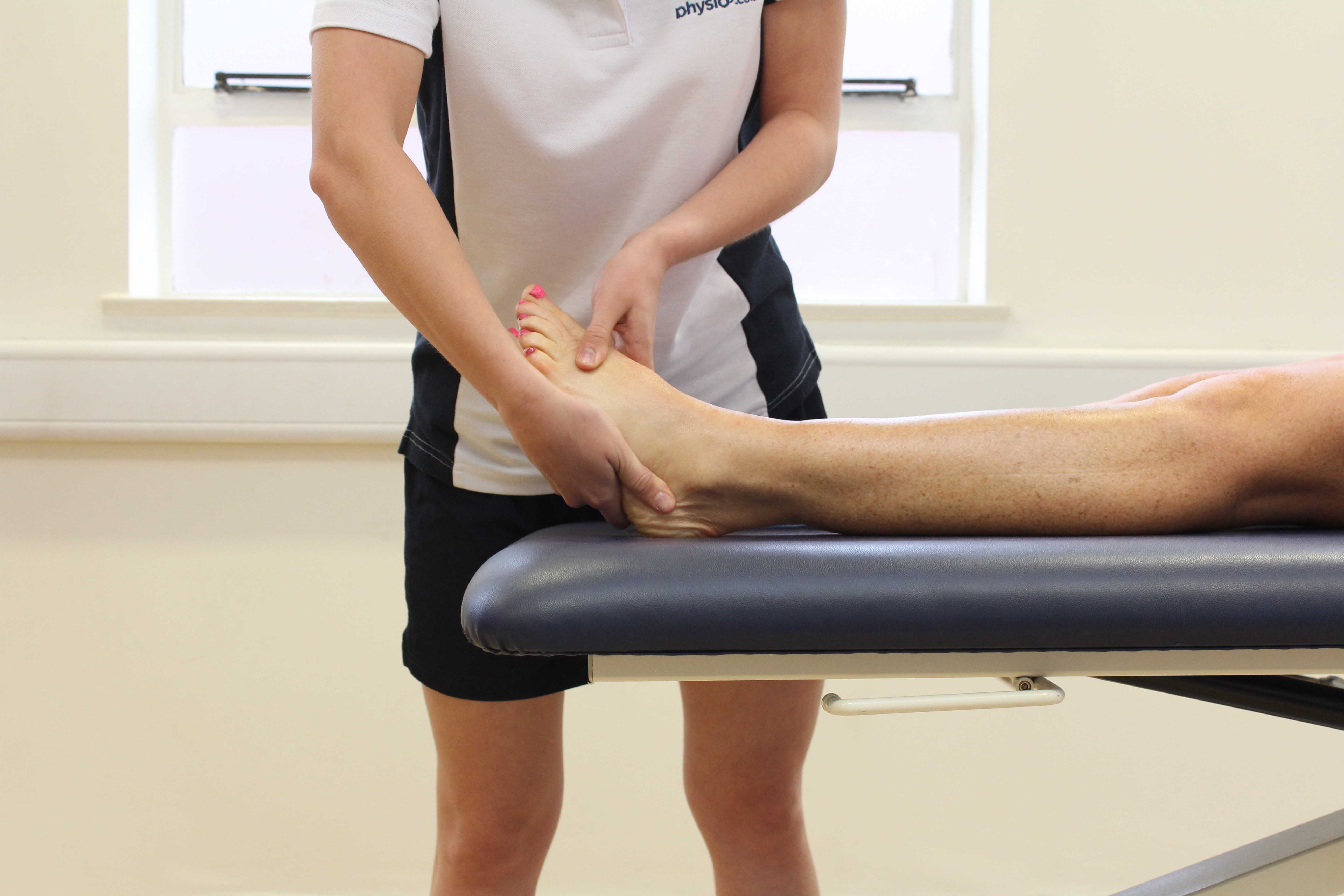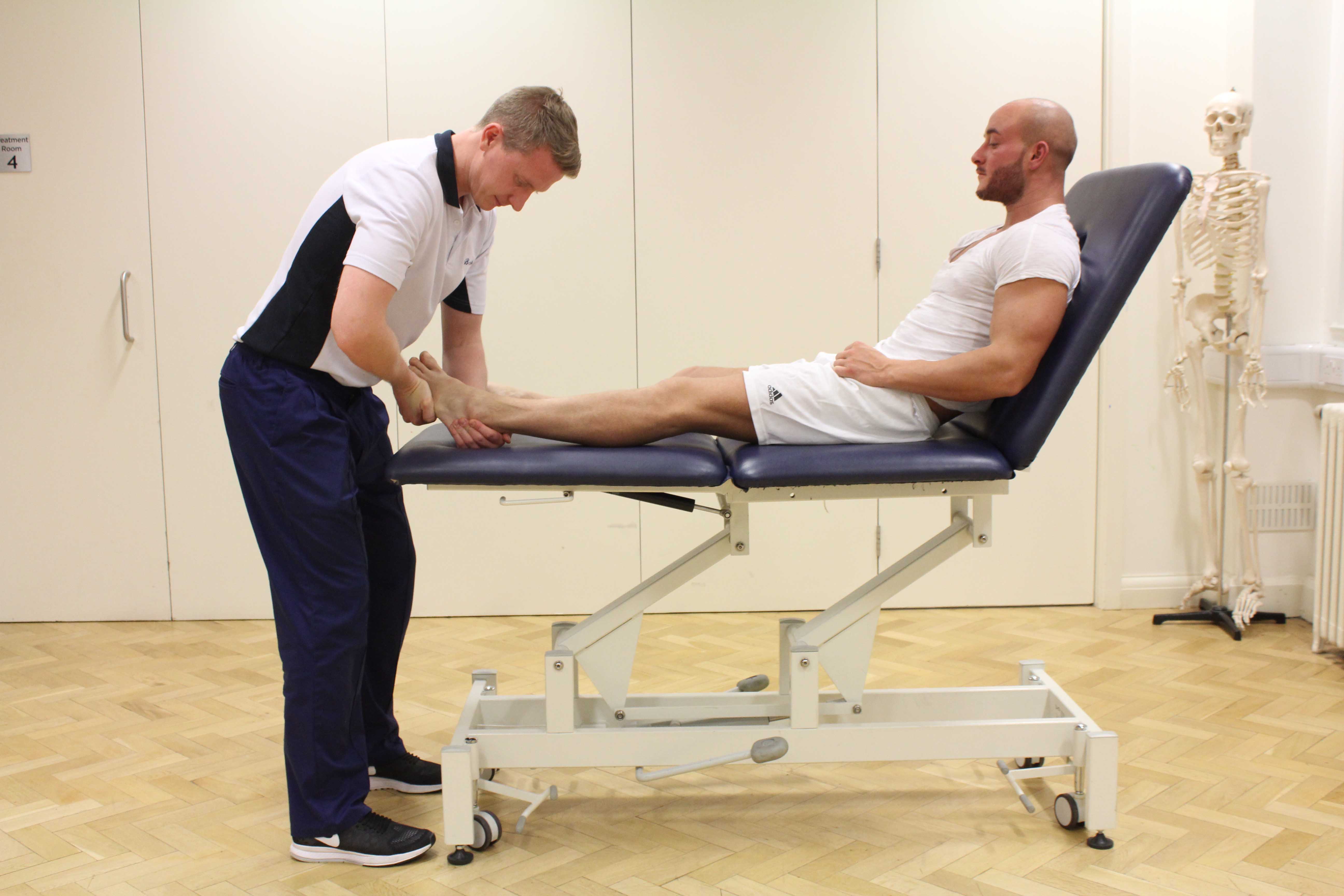The ostrigonum is an accessory (extra) bone that sometimes develops behind the talus (ankle bone) during adolescence. Not many people have this extra bone, and many of those who do don’t know they do as they experience no problems with it.
In people with an os trigonum, problems tend to arise during sport when the foot is fully flexed, such as whilst kicking a football. This is because the bone can become trapped between the ankle and heel bones, and is known as os trigonum syndrome.
An os trigonum tends to be recognised following injury such as an ankle sprain, this can be because of actual injury caused by flexion, or simply the fact the foot is examined in a great deal of depth. Following diagnosis of os trigonum syndrome, non-surgical treatment is often used to relieve symptoms. This is likely to include rest, modification of activity, and taping techniques.
Should the non-surgical treatment fail to be effective, surgery to remove the bone is used. Removal of the bone is possible as it is unnecessary for normal functioning of the foot.
Surgery to remove the os trigonum involves a 3 to 4 cm curved incision made at the rear of the foot, through which the extra bone is dissected. The heel bone is then smoothed and the wound sealed with stitches.
Physiotherapy is important following surgery to reduce pain swelling and regain range of movement to allow you to return to full function.
 Above: Soft tissue massage of the planta fascia under the foot
Above: Soft tissue massage of the planta fascia under the footSymptoms following os trigonum surgery
Following surgery some pain and swelling round the scar site should be expected. This can be managed with pain relief medication and ice therapy (Cryotherapy).
 Above: Stability training for the foot and ankle
Above: Stability training for the foot and anklePhysiotherapy following ostrigonum surgery
0-1 weeks Following surgery you will be required to keep all weight off the affected foot for the first week. During this period you will use crutches in order to get around, however you should predominantly rest with your foot elevated and apply ice, this will keep swelling to a minimum. Our physiotherapists will provide you with a seated exercise plan that involves exercises for the hip, knee and ankle – this will enable you to keep up your strength and stamina during this period of rest.
1-2weeks During this period you will be able to put weight on your foot within the protection of a cast. It is important you continue with the previous exercise plan to maintain your strength. You may have some residual pain around your scar site but this should be nearly fully resolved. Our physiotherapists will be able to advise you on aerobic exercises you can be doing in order to maintain and progress your stamina – this likely to include work on the bike or rowing machine.
2-3weeks With your cast removed, you will be able to begin gentle range of movement exercises. These should be pain free, as your previous cause of pain has been removed, if this is not the case this must be discussed with your physiotherapist. As you are free from your protective cast we will also begin to include some balance work to get you used to putting full weight through your foot again.
 Above: Friction massage of the ligaments in the foot
Above: Friction massage of the ligaments in the foot3-4weeks At this point, our physiotherapists will progress your range of movement exercises to include a strengthening component. As the bone removed had no role to play in walking, your walking pattern should not have been affected. Our physiotherapist will assess this in order to ensure this is the case. If your walking pattern is altered slightly due to your period within the cast, our physiotherapists will be able to help address this accordingly.
4-6weeks You should now be pain free with full range of movement and strength, and ready to begin weight-bearing aerobic exercise such as jogging. Our physiotherapists will be able to advise how much you should be doing and will make a progression programme taking into account your personal goals. The physiotherapy programme prescribed will also include any functional activities you feel are essential to return to from ballet dancing to playing football.
 Above: mobilisations and stretches of the foot and ankle
Above: mobilisations and stretches of the foot and ankleSummary
Surgery to remove an os trigonum is only carried out in severe cases of os trigonum syndrome where the bone is typically problematic and has proven unresponsive to non-surgical management. The surgery involves removing the extra bone and smoothing off the edges of the heel bone, recovery is usually quite quick as the bone had no previous role in normal foot function. Following surgery it is likely you will be able to return to physical activity within 6 weeks. Physiotherapy following surgery is used to address any loss of movement and strength that may have occurred during your period of immobility within the cast. Physio.co.uk will create a personalised programme of recovery aimed at achieving your personal goals.
Call Physio.co.uk now on 0330 088 7800 for more information or to book an appointment please contact us.

 0330 088 7800
0330 088 7800





































